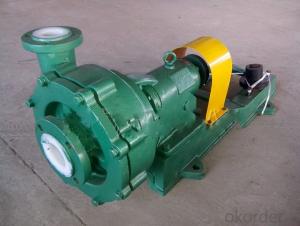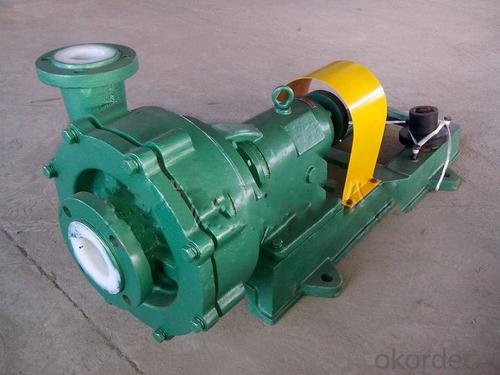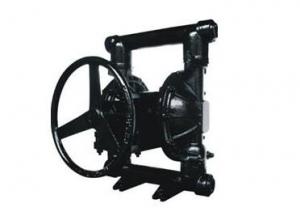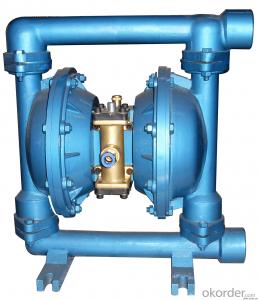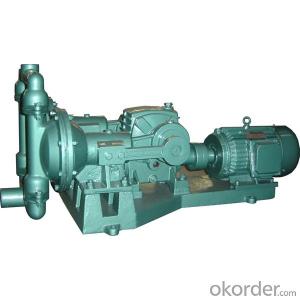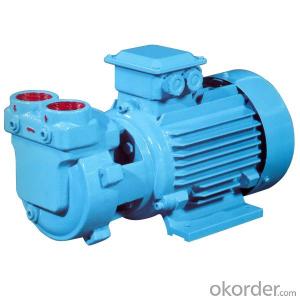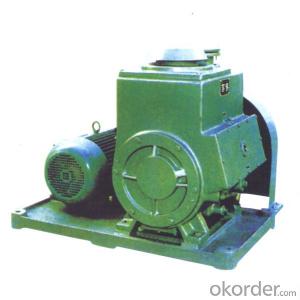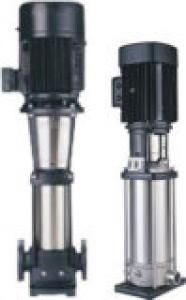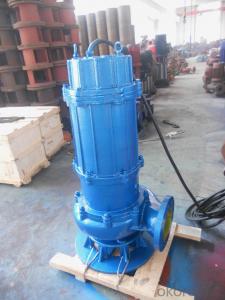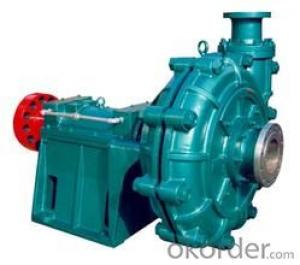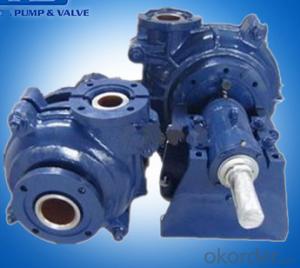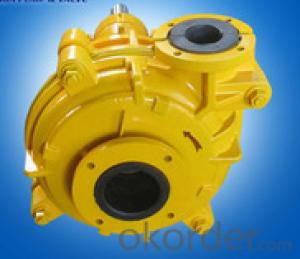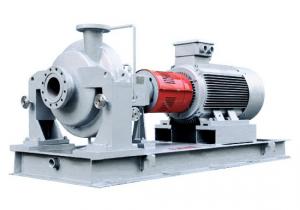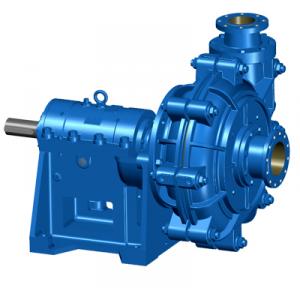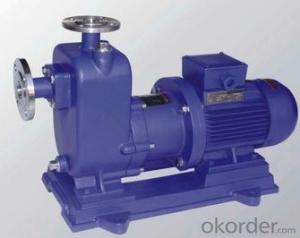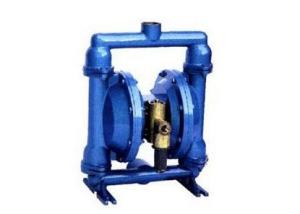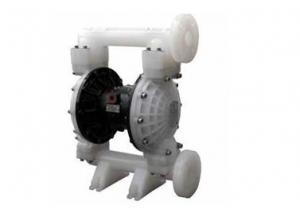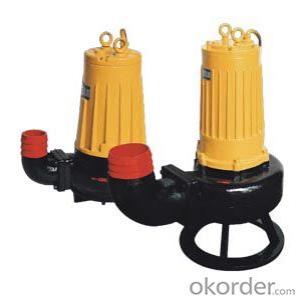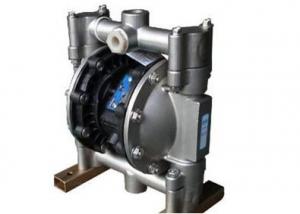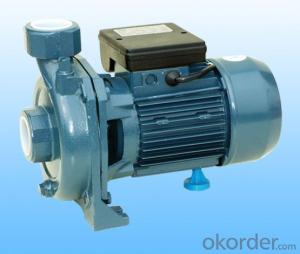Corrosion Wear Slurry Pump
- Loading Port:
- China Main Port
- Payment Terms:
- TT OR LC
- Min Order Qty:
- -
- Supply Capability:
- -
OKorder Service Pledge
Quality Product, Order Online Tracking, Timely Delivery
OKorder Financial Service
Credit Rating, Credit Services, Credit Purchasing
You Might Also Like
UHB-ZK Series Slurry Pump is single stage single-suction centrifugal Pump, this pump is designed to transmit the corrisive medium which contain particle or crystallization. This Pump use steel-lining Ultra-high Molecular Polyethylene molding process to manufacture the pump. So it has superior performance in corrosion prevention and wear resistance. Cantilever structure is designed to open in front semi-open impeller (without front and back panels ). This design increases the trafficability ot the line. And it can make the medium particles and impurities quickly through the pump without block. The seal is K-tppe fluorine rubber seal ring outer zone cooling water device. And it meets the requirements of corrosion prevention and wear resistance.
1, Feature: The Overflow components adopt the steel liner ultra-high molecular polyethylene manufacturing, This pump wear resistance is 4 times of PTFE and 6-7 times of Carbon steel, Stainless steel. Corrosion resistant, acid or alkali liquor slurry are applicable. No adhesion, anti adhesion ability and samilar with PTFE material. Low friction coefficient, having self lubricity. Safe and reliable, toxin free, suitable for use in the food industry.
, PTFE.
2, Applicable medium: Concentration of Sulfuric acid and nitric acid are below 80% and below 50% respectively. Hydrochloric acid, th concentriation of each liquid alkali, and mine with corrosive slurries and pulp, namely applicable clear liquid also applicable slurry.
Working Temperature: -20 - 80 degree
Flow: 3 m3/h- 1000m3/h
Head: 15-50 m
Competitive Advantages
Well and High Quality Control,
New Product,
Competitive Prices,
Earth-friendly Products
1, Feature: The Overflow components adopt the steel liner ultra-high molecular polyethylene manufacturing, This pump wear resistance is 4 times of PTFE and 6-7 times of Carbon steel, Stainless steel. Corrosion resistant, acid or alkali liquor slurry are applicable. No adhesion, anti adhesion ability and samilar with PTFE material. Low friction coefficient, having self lubricity. Safe and reliable, toxin free, suitable for use in the food industry.
, PTFE.
2, Applicable medium: Concentration of Sulfuric acid and nitric acid are below 80% and below 50% respectively. Hydrochloric acid, th concentriation of each liquid alkali, and mine with corrosive slurries and pulp, namely applicable clear liquid also applicable slurry.
Working Temperature: -20 - 80 degree
Flow: 3 m3/h- 1000m3/h
Head: 15-50 m
Competitive Advantages
Well and High Quality Control,
New Product,
Competitive Prices,
Earth-friendly Products
- Q: Can an air pump be used for inflating air tents?
- Yes, an air pump can be used for inflating air tents. Many air tents are designed to be inflated using an air pump, which can make the setup process much quicker and easier compared to traditional pole tents. The air pump supplies a constant flow of air into the tent's inflatable beams, which quickly and efficiently inflate the structure. This eliminates the need for manual assembly and allows for a hassle-free camping experience. However, it is important to ensure that the air pump is compatible with the specific air tent model to prevent any damage or inefficiencies during inflation.
- Q: Can an air pump be used for oxygen therapy?
- No, an air pump cannot be used for oxygen therapy. Oxygen therapy requires the use of an oxygen concentrator or an oxygen cylinder, which provide a higher concentration of oxygen than what is available in ambient air. An air pump simply moves air and does not have the capability to concentrate or deliver oxygen at the required levels for oxygen therapy. It is important to use the appropriate equipment recommended by medical professionals to ensure the safety and effectiveness of oxygen therapy.
- Q: How does an air pump prevent dust accumulation?
- By circulating and creating a flow of air, an air pump effectively prevents the buildup of dust. When activated, the air pump pulls in air from the surrounding space and expels it forcefully. This constant air movement hinders dust from settling on surfaces and instead keeps it suspended in the air, facilitating its capture and removal through filtration systems or ventilation. Moreover, the enhanced air circulation brought about by the air pump aids in decreasing humidity levels, which, in turn, impedes dust accumulation as it has a greater tendency to settle in moist environments.
- Q: How does an air pump handle different airflow capacities?
- An air pump can handle different airflow capacities by adjusting its speed and power output. It has a motor that can be controlled to increase or decrease the speed of the pump. This allows it to generate more or less air pressure and flow rate according to the desired capacity. Additionally, air pumps often come with adjustable valves or nozzles that can help regulate the airflow by restricting or increasing the size of the opening. These features enable the air pump to accommodate different airflow capacities and provide the required amount of air for a variety of applications.
- Q: Can an air pump be used for dusting or cleaning purposes?
- No, an air pump is not typically used for dusting or cleaning purposes. It is primarily used for inflating objects such as tires, balloons, or inflatable mattresses. For dusting or cleaning, specialized tools like dusters, vacuum cleaners, or compressed air cans are more suitable.
- Q: Can an air pump be used for inflating air cushions for outdoor seating?
- Yes, an air pump can be used for inflating air cushions for outdoor seating. Air pumps are designed to inflate various inflatable objects, including air cushions.
- Q: Can an air pump be used for inflating air beds with built-in electric pumps?
- Yes, an air pump can be used for inflating air beds with built-in electric pumps. Although air beds with built-in electric pumps are designed to inflate themselves, an external air pump can also be used as an alternative method. This can be especially useful in situations where the built-in electric pump is not functioning properly or if a faster inflation time is desired. It is important to ensure that the air pump being used is compatible with the air bed's valve in order to effectively inflate the mattress.
- Q: The gas oxygen can replace the pump?
- The gas is used in high-pressure oxygen, compressed air pump is playing, is not the same thing.
- Q: Can an air pump be used for inflating bike tires?
- Indeed, bike tires can be inflated using an air pump. There are different types of air pumps available, such as floor pumps, hand pumps, and mini pumps, all of which have the capability to inflate bike tires. These pumps are designed specifically to create sufficient air pressure for filling bike tires to the recommended level. Moreover, certain air pumps are equipped with attachments or nozzles that can be utilized to fit the valve on the bike tire, guaranteeing a secure and efficient inflation procedure. To prevent any compatibility problems, it is crucial to verify the appropriate valve type on the bike tire and choose a pump with a compatible nozzle.
- Q: How does an air pump prevent air leakage during inflation?
- An air pump prevents air leakage during inflation by creating a higher pressure inside the inflatable object than the surrounding air pressure, which effectively seals any potential openings or leaks.
Send your message to us
Corrosion Wear Slurry Pump
- Loading Port:
- China Main Port
- Payment Terms:
- TT OR LC
- Min Order Qty:
- -
- Supply Capability:
- -
OKorder Service Pledge
Quality Product, Order Online Tracking, Timely Delivery
OKorder Financial Service
Credit Rating, Credit Services, Credit Purchasing
Similar products
Hot products
Hot Searches
Related keywords
